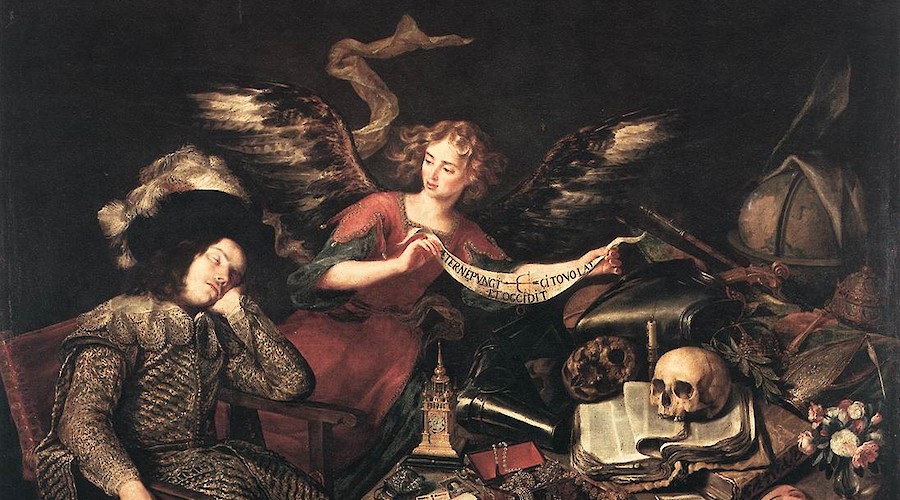Making Marbles: Science & Splendor at the Courts of Europe

The Met brings a collection of unique objects collected by European royal families (1550-1750), where we can find “The Knight’s Dream” painting by Spanish artist Antonio de Pereda.
Between 1550 and 1750, nearly every royal family in Europe assembled vast collections of valuable and entertaining objects. Such lavish public spending and display of precious metals was considered an expression of power. Many princes also believed that the possession of artistic and technological innovations conveyed status, and these objects were often prominently showcased in elaborate court entertainments, which were characteristic of the period.
Making Marvels will explore the complex ways in which the wondrous items collected by early modern European princes, and the contexts in which they were displayed, expressed these rulers’ ability to govern. Approximately 170 object s—including clocks, automata, furniture, musical instruments, jewelry, paintings, sculptures, print media, and more— from both The Met collection and over fifty lenders worldwide will be featured. Visitors will discover marvelous innovations that engaged and delighted the senses of the past, much like twenty-first-century technology holds our attention today —through suspense, surprise, and dramatic transformations.
About The Knight’s Dream
The collection brings The Knight’s Dream painting by the Spanish painter Antonio de Pereda. Born in Valladolid in 1600, he is formed in Madrid in the workshop of Pedro de las Cuevas, enjoying the protection of the painter Juan Bautista Crescenzi, who is going to facilitate their access to the Court. He died in Madrid in 1678. He is one of the most interesting painters from the 16th century because of his extraordinary technical command and his mastery in the representation of the qualities of things. In addition to his religious-themed works, he represents a major breakthrough compared to the work that precedes him. The most fascinating part of his canvases are the vanitas, symbolic work of art showing transcience of life and the certainty of death, emphasizing in his case the disappointment of life.
The Knight’s Dream (1650) is a vanitas painting (also called The Dream of Life or Life is a Dream), is a splendidly sensuous composition (oil on canvas), full of brilliantly painted still-life details, in which worldly pleasures and treasures are seen to be as insubstantial as a dream. A young nobleman has fallen asleep in an armchair on the left, his head, pale with sleep, supported by one hand. The content of his dream –the world and its vanity– is displayed on the table on the right, against a pitch-black background. Other objects of vanity, apart from the power insignia mentioned above, are books, music, coins, jewellery, weapons and a mask (as a symbol of Thalia, the theatre). These are all considered futile. Transience is symbolized by two skulls, one of them rolled over so that we can see inside, as well as by a burnt candle and a clock. The flowers in the vase, too, are symbols of vanity.